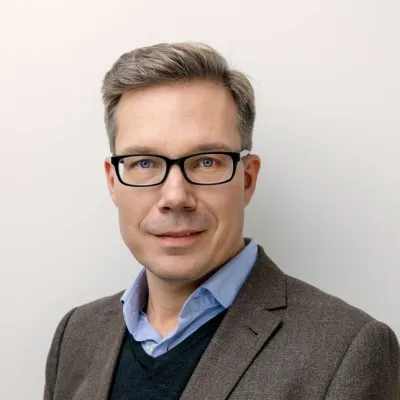VTT, together with Aalto University and industrial partners, has started a joint effort to accelerate the development and commercialization of tailored high-performance detectors and systems for different application areas, ranging from medical imaging to environmental sensing. The new detector ecosystem, RaPtor, is part of the renewal of the Finnish electronics industry initiative.
Detection of electromagnetic and particle radiation is essential in numerous applications from industrial instrumentation and analysis services to medical imaging and consumer products. Advancements in these fields drive always-increasing detector requirements in terms of sensitivity, speed and spectral range, and this calls for novel innovations. The newly launched VTT-coordinated ecosystem project, radiation and photo detector technologies for the Finnish electronics industry (RaPtor), will bring together the expertise of Finnish industry and research organizations to meet the demands for new solutions.
"It is difficult to sufficiently emphasize the importance of detectors and related microsystems. They are the eyes of the digitalization. Quite often they are also the noses of sensing, like for example in spectroscopic carbon dioxide sensors. Most of us already have high-performance detector microsystems in our pockets, in the form of the cameras in our mobile phone. Similar maturity is needed and pursued also in other fields of detection," says Research Professor Mika Prunnila, the scientific coordinator of RaPtor.
"Detector technologies play an important role in the business of many Finnish companies, and RaPtor consortium is an excellent example of that," adds Kari Leino, Senior Advisor at Business Finland.
The RaPtor ecosystem is co-funded by Business Finland. It consists of a public funding research project carried out by VTT and Aalto University, and several industrial projects led by companies Emberion, Oxford Instrument Technologies, Vaisala, Kovilta, ElFys, Senop and Athlos. RaPtor is also linked to the photonics flagship programme PREIN.
New solutions combine technologies, applications range from medicine to environmental monitoring
The detector solutions in the RaPtor ecosystem will be based on a wide range of technological knowhow on detector physics, material science, component fabrication and system level design. In addition to new detector concepts, RaPtor will enhance the related microsystem production capabilities to boost disruptive creation of new markets. The active presence of industrial players from across the value chain promotes focusing on application driven solutions with strong market pull.
"We are delighted to be part of the new ecosystem and share our knowledge on detectors with broader community. These activities are also ideal to boost further collaboration within the growing photonics field in Finland," says Professor Hele Savin, project leader for the infrared detector development at Aalto University.
The RaPtor ecosystem specifically targets spectral infrared arrays for forensics, thermal imaging and chemical analysis that are essential to applications from medicine to environmental sensing. Other focus area is high energy radiation detection, where the applications of interest are in intraoral X-ray imaging and industrial material analysis, and in particle detection to tackle the challenges of high sensitivity and cost effective radon gas detection.
Clean rooms are fundamental for the R&D and business within the field
Like the integrated circuit manufacturing for computer processors, also the detector microsystems require advanced clean room facilities. The Micronova cleanroom facility in Espoo, Finland, operated jointly by VTT and Aalto University, provides versatile services from basic and applied research to small-scale commercial manufacturing. The clean room has capacity for many different micro- and nanotechnologies from MEMS to integrated photonics and superconductive circuits. It is the largest clean room in Nordic countries and plays a key role in the renewal of the Finnish electronics industry.




